.
Antinoo (c. 110–130 d.C.) fu l'amante dell'imperatore romano Adriano.
Su di lui si veda anche: Category:Antinous.
Indice |
[modifica] BUSTS
- Antinous in the National Archaeological Museum in Athens.
- Antinoo-Bacco - Roma - Musei capitolini.
- Antinoos, at the Hermitage Museum
[modifica] Antinous of Ecouen
English: A 18th-century copy after an original coming from the villa Adriana, now in the Prado Museum. Now in the Louvre Museum.
[modifica] Ludovisi Antinous
English: Only the chest and cranium are ancient; the head is a modern restoration after known antique portraits of Antinous. From the Ludovisi collection, now in Palazzo Altemps.
[modifica] Antinous Mondragone
English: The Antinous Mondragone represents Antinous as Dionysos. The head comes from a colossal statue; it was found near the Villa Mondragone, Frascati, between 1712 and 1728. One of the most idealised image of Antinous, it was praised by Winckelmann as "the glory and crown of sculpture. Now in the Louvre Museum.
[modifica] Antinous Pio-Clementino
- Bust of the Sala Rotunda, Vatican Museums
[modifica] Antinous wearing a diadem
English: A very child-like representation from Antinous coming from Ostia Antica. Antinous wears a priestly diadem. Now in Palazzo Massimo alle Terme.
[modifica] Head from the Villa Adriana
English: Related to a coin of Adramyttion in Asia Minor. Now in Palazzo Massimo alle Terme.
[modifica] Antinous as Dionysos
English: Origine unknown, ca. 130 AD. Now in the Louvre Museum.
[modifica] Antinous as Osiris
[modifica]
THE STATUES OF ANTINOO
[modifica] Antinous Aristaeus
[modifica] Braschi Antinous
[modifica] Capitoline Antinous
So-called “Capitoline Antinous” (actually a portrait of Hermes), from the Villa Adriana in Tivoli, now stored at the Musei Capitolini (Inv. MC 741).[modifica] Cult statue at Delphi
English: Antinous as the Divine Ephebe.
Farnese Antinous -- ANTINOO FARNESE
English: A reelaboration of the 2nd century AD after a Greek original of the Late Classical period.
[modifica] As Dionysos
Found in 1795 in the imperial villa at Praeneste, now in the Sala Rotunda of the Museo Pio-Clementino, Vatican.[modifica] As Osiris
[modifica] As a priest
[modifica] RELIEFS
- Relief from the Villa Albani (Rome).
- Relief from the Villa Albani (Rome).
[modifica] MEDALLIONS
[modifica] GLYPTICS
[modifica] LATER STATUES
- Antinoos with snake, 1852, Potsdam
[modifica] PAINTINGS
- 19th century erotic engraving by Paul Avril
















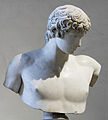




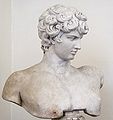






















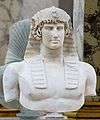








































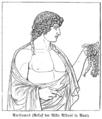




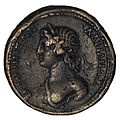
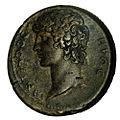
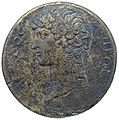







No comments:
Post a Comment